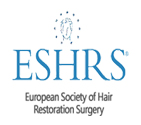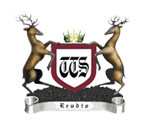- Mon-Sat | 8:00-18:00 Sunday (closed)
- Email : info@harleybodyclinic.co.uk
- Call : 02071679386

Facial liposuction is indicated for the problem areas— chubby or chipmunk cheek, double chin and submental fullness, to achieve a slender facial contour. It is one of the most delicate cosmetic surgeries and is performed with extra caution.
The surgery is different from that of buccal fat removal, in which the deep fat pads of the cheek are removed with an incision inside the mouth. In facial lipo however, buccal fat pads are preserved and only excess superficial fat deposits are removed selectively. With the small amount of fat removal, there is less potential of developing hollowness in the cheeks later in life. The incision marks do not leave any permanent scar, as long as the surgeon is well experienced.
The best candidates for facial liposuction are them who have excessive fat deposits in their mid face region starting from the line where the nose ends and the entire submental region.
Generally, healthy individuals with good skin elasticity and non-smokers are eligible for this surgery.
Individuals with moderate or above muscle ptosis will not benefit from this procedure alone. This is not a solution for wrinkles, sagging skin or neck wattles. Maximum retention of skin elasticity is coveted for the best results.
Facial contouring is performed with ultrasound based VASER Liposuction at Harley Body Clinic. The procedure is normally carried under local anaesthesia, and on an outpatient basis, twilight sedation or general anaesthesia is used only on patient’s request. The ultrasound-assisted micro-probes are of 1.2mm to 1.4mm dimensions that are gently oscillated inside the skin in the targeted area via tiny adits placed on the cheek, and/or jowl area. The ultrasonic radiation creates gentle vibrations that dislodges and emulsify fat cells (the process called lipolysis). The dissolved fat starts to seep out from the incisions that are either suctioned using an aspiration system, or reduced with lymphatic drainage massage. This ultrasound-based lipolysis reduces potential risks of invasiveness, scarring and bruising. Since the sound vibrations can dislodge stubborn fatty tissues with gentle oscillation, there is minimal requirement of manual exertion of the cannula, reducing chances of nerve perforation, necrosis etc. There is a non-surgical measure of administering ultrasound based lypolisis as well. This is to apply a hand held device over the skin of the problem area causing emulsification of fat cells under the uppermost layers of skin. The fat is dissolved with bodily fluids and is easier to shed through sweat and excretion. This procedure is indicated for minor changes and is effective for very little fat reduction. Several sessions are required to achieve a more dramatic result, indicated at an interval of 2-4weeks, as is applicable for the patient. Non-invasive facial lipolysis is completely safe, and a relaxing experience. Following the session, patients are indicated exercise, lymphatic massage and detoxification and to drink at least 8glasses of water a day.
Buccal Fat Removal surgery is relevant to facial liposuction, since the objective of both the procedures is to reduce excessively plump cheeks or chipmunk cheeks to achieve a proportionate facial contour. Buccal fat pads are removed with an incision inside the mouth and make the cheeks more slender. However, the deep fat of buccal pads also plays a pivotal function in carrying the essential facial volume, and muscle support. With normal aging, the volume of the cheeks reduces, so even if the patient achieves slender cheeks with the surgery, the results might not be lasting, and lead to the formation of hollow cheeks later in life, as well the cheek muscles to collapse. Buccal fat pad removal surgery is not a very commonly performed procedure, and is indicated for select few candidates. It is also very complicated to perform this procedure, and achieve exact results as targeted. Facial liposuction is also a very delicate surgery, it is not a very common procedure either, but it is comparatively less complicated as that of buccal fat removal. This is not about removing deep fat, but dislodging a tiny amount of superficial fat. Moreover, if the patient needs any restoration or augmentation to increase the volume of the cheeks, it can be done with implants or fat transfer, that will not be as complex as re-augmentation after buccal fat pads removal surgery. However, the conclusion can only be drawn with personal assessment of the patient, and it is integral to have a conservative approach and consulting surgeons that specialize in this procedure.


